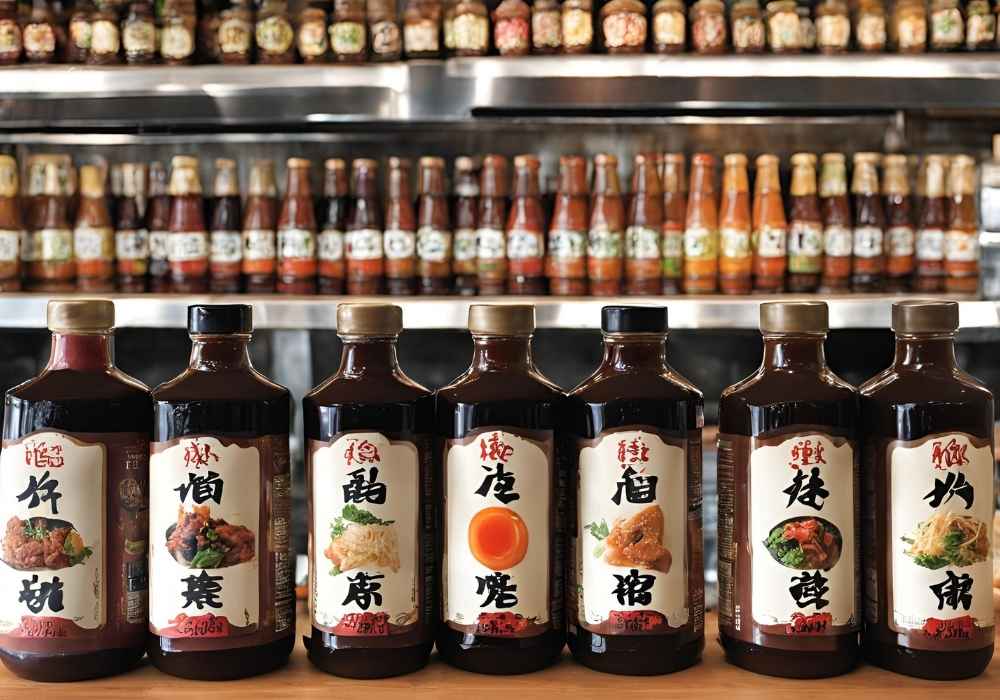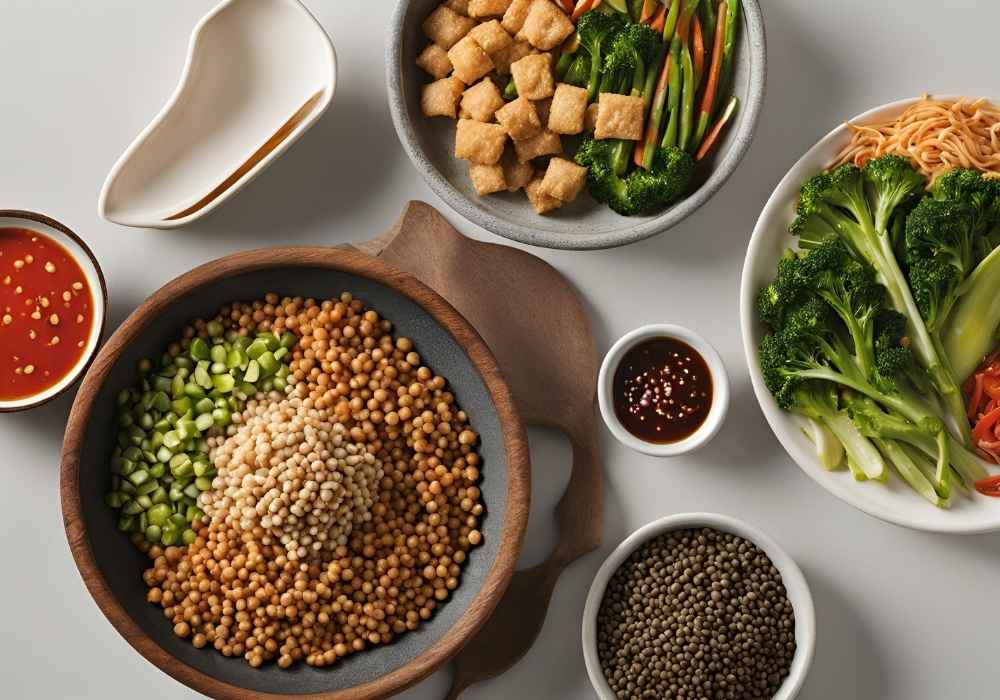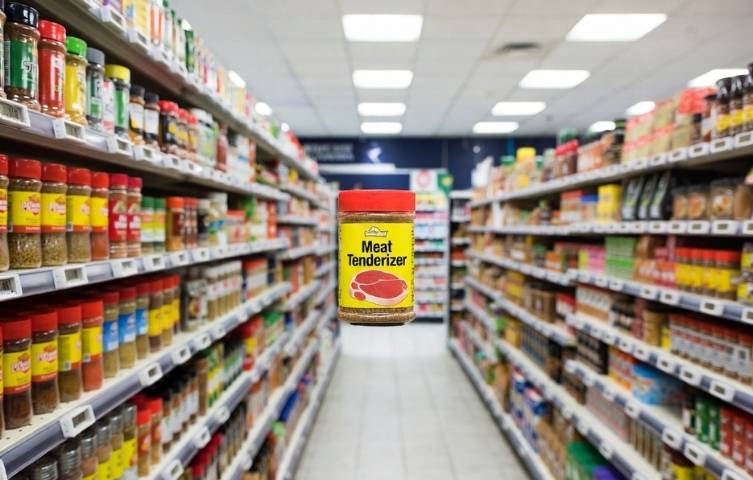Soyaki sauce is a culinary gem loved by vegans, food enthusiasts, and home cooks alike. Combining the savory depth of soy sauce with the sweetness of teriyaki, this versatile sauce adds flavor to any dish. But what exactly is soyaki sauce, how is it made, and how can you make the most of it in your kitchen?
This blog will explore everything you need to know about soya sauce—from its ingredients and health benefits to creative ways to incorporate it into your meals. Get ready to level up your cooking game!
What Is Soyaki Sauce?

Soyaki sauce is a fusion condiment that marries the iconic flavors of Japanese soy sauce and teriyaki sauce. It is the best of both worlds—savory, sweet, tangy, and perfectly balanced.
Key Ingredients
This sauce typically includes a blend of:
- Soy Sauce for its rich umami notes
- Sugar or Honey for sweetness (great news for vegans since many soya sauces use plant-based sugar!)
- Sesame Seeds for nutty flavor and texture
- Garlic and Ginger for aromatic freshness
- Mirin or Rice Wine Vinegar for a hint of tanginess
It offers the perfect balance of salty and sweet, with aromatic undertones from the sesame, Ginger, and garlic.
Why Is It Popular?

Soyaki earns significant points for its versatility. It pairs beautifully with various dishes—from stir-fries and marinades to salads and dipping sauces. Plus, it’s compatible with multiple dietary preferences, mainly vegan and plant-based diets.
Health Benefits of Soyaki Sauce
While soyaki sauce should be enjoyed in moderation (due to its sodium and sugar content), there are some nutritional benefits to consider.
Protein-Rich Soy Base
Soy sauce, a primary ingredient in soya, is made from fermented soybeans and provides small amounts of protein. For those on plant-based diets, every bit helps!
Vitamins and Minerals
Garlic and Ginger, staples of soya, are rich in antioxidants that may support the immune system and aid digestion. Sesame seeds contribute magnesium and iron, which are essential for overall health.
Low Calorie
Soyaki adds a robust flavor to meals without significantly increasing calories—a win for anyone mindful of their health.
Pro Tip: Opt for low-sodium soya versions if you’re watching your salt intake!
How to Use Soyaki Sauce in the Kitchen
One of Soyaki’s most significant selling points is its versatility. Here are some creative ways to bring this sauce into your meals:
1. Marinate Your Proteins
Soyaki makes an ideal marinade for tofu, tempeh, seitan, and vegan meats like Beyond Burgers or jackfruit. The mix of savory and sweet flavors penetrates proteins, adding richness.
How To Use It: Marinate for at least 30 minutes or overnight for deeper flavor.
2. Glaze for Stir-Fries
Add soya sauce towards the end of cooking for a glossy, flavorful glaze. It complements stir-fried vegetables, noodles, and rice.
Pro Tip: Toss in a handful of sesame seeds for texture and garnish with scallions.
3. Dipping Sauce Extraordinaire
Soyaki is the perfect dip for dumplings, spring rolls, sushi, or vegetable tempura. You can even pair it with crusty bread for a fusion twist.
Enhance It: Mix with chili oil or fresh lime juice for a kick of spice or zest.
4. Salad Dressing with a Twist
Dilute soyaki sauce with water or olive oil for a quick and flavorful salad dressing. Its umami notes make it an excellent choice for Asian-inspired salads or slaw.
Bonus Additions: Grated Ginger or a splash of orange juice elevates its profile.
5. Drizzle on Roasted Veggies
Have you finished roasting Brussels sprouts, sweet potatoes, or cauliflower? Add a drizzle of soya for a punch of flavor.
6. Homemade Sushi Perfection
Instead of regular soy sauce for dipping sushi, try soyaki. Its tangy sweetness brings out the flavors of avocado rolls, cucumber rolls, and even veggie hand rolls.
Can You Make Soyaki Sauce at Home?
Absolutely! If you love experimenting in the kitchen, homemade soya is a great project. Plus, you can control the ingredients to suit your dietary needs.
Homemade Soyaki Sauce Recipe
Ingredients:
- ½ cup soy sauce (use low-sodium for a healthier twist)
- 3 tbsp brown sugar or maple syrup for vegan sweetness
- 1 tsp minced garlic
- 1 tsp minced Ginger
- 1 tbsp toasted sesame seeds
- 1 tbsp rice wine vinegar or mirin
Instructions
- Combine all ingredients in a saucepot.
- Simmer over low heat for 5-7 minutes, stirring occasionally until the mixture thickens slightly.
- Allow to cool and store in an airtight jar in the refrigerator for up to two weeks.
Why Make Your Own?
Making soyaki sauce at home is budget-friendly and perfect for customizing flavors. Love garlic? Add more! Would you prefer it to be less sweet? Reduce the sugar.
Best Store-Bought Soyaki Sauces for Convenience
Don’t want to make it from scratch? No problem! Here are some popular store-bought soya sauces ready to enhance your dishes:
Trader Joe’s Soyaki Sauce – A vegan favorite with a balanced flavor and sesame-rich finish.
Primal Kitchen No Soy Teriyaki – Perfect for soy-free diets.
365 by Whole Foods Soyaki Sauce – Great for both quality and affordability.
Look for soya sauces made with natural, wholesome ingredients.
Why Should Vegans and Foodies Love Soyaki Sauce?
Soyaki is not just a flavor enhancer—it’s also a creative canvas. For vegans, it helps transform plant-based proteins and vegetables into delicious meals. For food enthusiasts, it opens up a world of culinary possibilities rich with umami.
Here’s what makes it a must-have:
Variety: It complements countless dishes, from sushi to salads.
Convenience: Great for last-minute cooking bursts of flavor.
Uniqueness: The fusion of soy and teriyaki creates a distinctive salty, sweet, and tangy balance.
Your Culinary Adventure Begins with Soyaki
Whether you want to elevate your weeknight dinners or experiment with something new, soya sauce is a must-have in your kitchen arsenal. With its depth of flavor, health benefits, and countless uses, it’s no wonder soya has become a staple for food lovers everywhere.
Next time you’re at the grocery store, grab a bottle or whip some up at home! Your taste buds will thank you.




